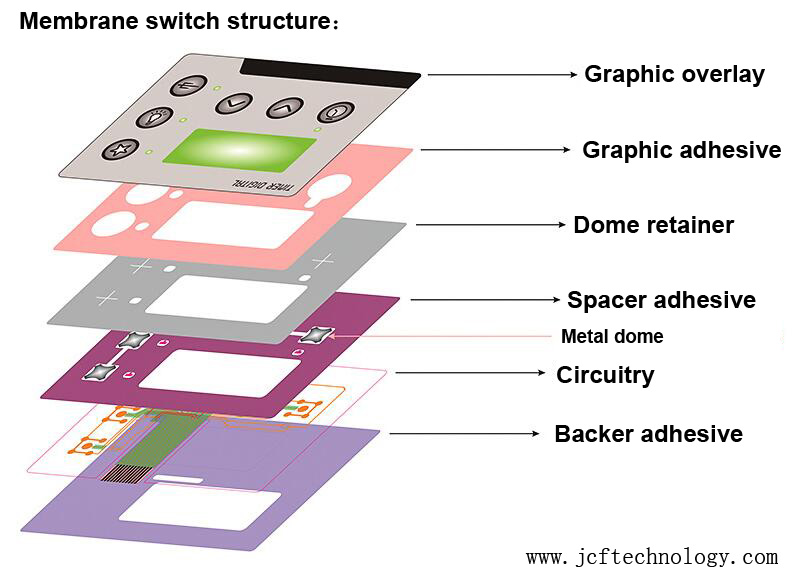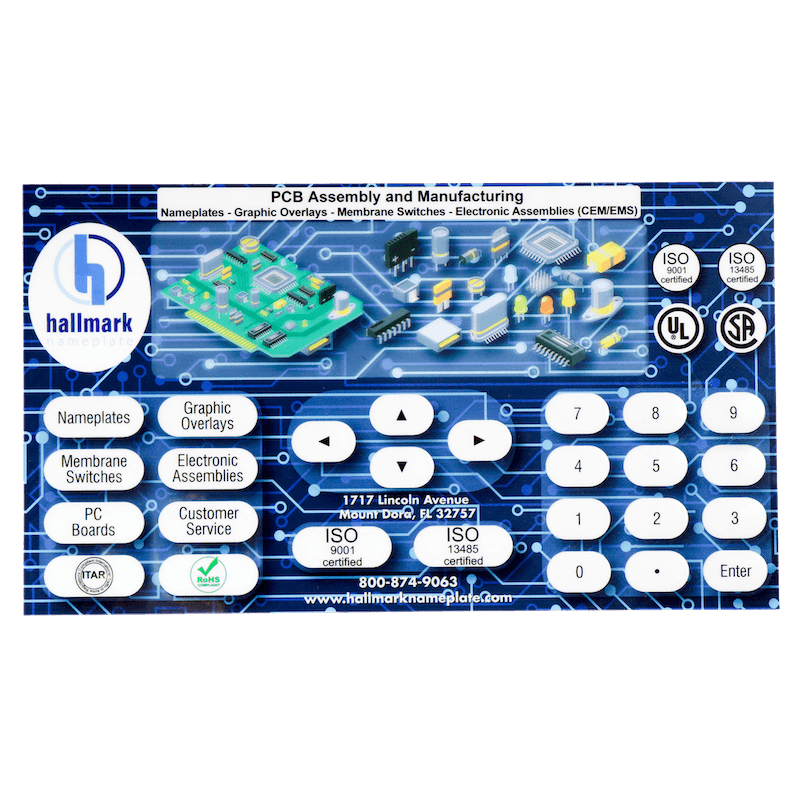Choosing the Right Membrane Switch for Your Business Needs
Choosing the Right Membrane Switch for Your Business Needs
Blog Article
Understanding Membrane Layer Switches: The Secret to Reliable and long lasting Controls

What Are Membrane Switches?
Membrane layer buttons are an advanced remedy in the realm of individual interface modern technology, combining functionality and layout perfectly. These gadgets offer as a user interface in between customers and digital systems, integrating several elements into a small style. Normally created from flexible, thin layers of materials, membrane buttons are designed to react to touch, enabling users to communicate with machinery and electronic devices effectively.
The primary aspects of a membrane layer button consist of a printed circuit layer, visuals overlay, and a spacer layer that stops unintended activation. The graphic overlay can be customized to reflect brand name identification or individual preferences, enhancing aesthetic appeals while guaranteeing functionality. Membrane layer switches are commonly utilized in different applications, including medical gadgets, consumer electronics, and industrial devices, owing to their resilience and resistance to environmental elements such as moisture and dust.
One of the key advantages of membrane layer switches is their capacity to stand up to wear and tear, making them perfect for high-traffic settings. In addition, they are light-weight and call for marginal room, enabling for cutting-edge styles in product growth. Generally, membrane switches over represent a efficient and functional choice for modern-day electronic user interfaces, weding innovation with user-centric layout principles.
Just How Membrane Switches Over Work
The operation of membrane layer switches hinges on a straightforward yet effective system that equates user input right into digital signals. When a user presses the switch, the top layer warps, permitting a conductive component in the circuit layer to make call with an equivalent conductive pad on the bottom of the graphic overlay.
The design of membrane buttons can vary, but they commonly include domes or tactile elements to offer responses to the user, improving the general experience - membrane switch. The products utilized in membrane layer buttons, such as polyester or polycarbonate, add to their sturdiness and resistance to ecological aspects, consisting of dampness and dirt. Furthermore, the printed circuits are normally enveloped, which shields them from damage with time.
Advantages of Membrane Layer Buttons

In addition, membrane switches are known for their longevity. Created from durable products, they are immune to dirt, dampness, and physical wear, which considerably extends their life expectancy compared to standard mechanical switches. This durability makes them especially appropriate for high-traffic atmospheres and applications needing durability.
One more considerable advantage is the ease of cleaning and upkeep. The smooth surface area of membrane layer changes lessens dust buildup and is frequently invulnerable to spills, making them optimal for settings that require constant sanitization.
In addition, membrane switches offer a streamlined account, causing a thinner style that can be integrated into numerous tools without adding bulk. This attribute not just improves the aesthetic charm yet likewise adds to a more ergonomic item style.
Applications of Membrane Switches
Versatile and easy to use, membrane layer buttons discover applications throughout a wide variety of sectors, including clinical devices, customer electronics, and commercial equipment. In the clinical field, these buttons are indispensable to gadgets such as analysis tools, client monitoring systems, and mixture pumps, where reliability and convenience of cleaning are crucial. Their ability to stand up to harsh settings and keep capability makes them suitable for such applications.

In customer electronics, membrane buttons are made use of in products like microwaves, cleaning equipments, and remote controls - membrane switch. Their streamlined design enables instinctive customer interfaces, enhancing the general individual experience while giving longevity and resistance to tear and use
Commercial equipment likewise profits from membrane layer switches, particularly in control panels for equipment and automation systems. These switches provide security versus dirt and dampness, guaranteeing constant efficiency in challenging environments. Moreover, their personalized attributes permit manufacturers to tailor them to specific functional requirements, enhancing effectiveness and performance.
Selecting the Right Membrane Layer Change
When choosing a membrane switch, it is essential to consider different aspects that influence performance and suitability for specific applications. The main factors to consider include environmental conditions, responsive comments, longevity, and layout specifications.
First, assess the operating setting; buttons subjected to moisture, chemicals, or severe temperature levels need certain products to make certain long life and performance. Next, review the need for responsive responses. Relying Visit Website on individual interaction, some applications might take advantage of a tactile reaction to confirm activation, while others might like a non-tactile design for visual reasons.
Resilience is an additional critical variable; membrane buttons must be designed to hold up against frequent use, website link impacts, and abrasion. Make sure the picked button can sustain the expected lifecycle, specifically in high-usage circumstances.

Conclusion
In verdict, membrane changes offer as vital parts in the design of long lasting and dependable control systems across different industries. The flexibility of membrane layer switches over allows for tailored options that fulfill details operational needs, strengthening their value in modern technology.
Membrane changes stand for a critical aspect of modern interface style, mixing capability with strength in numerous applications.Membrane switches are an innovative solution in the realm of user interface technology, integrating performance and style effortlessly. Generally created from flexible, thin layers of materials, membrane layer buttons are designed to react to touch, making it possible for individuals to engage with equipment and electronic gadgets efficiently.
The style of membrane switches can differ, but they typically integrate domes or tactile elements to provide feedback to the customer, boosting the general experience.In verdict, membrane changes offer as essential components in the design of reputable and resilient control systems across numerous markets.
Report this page